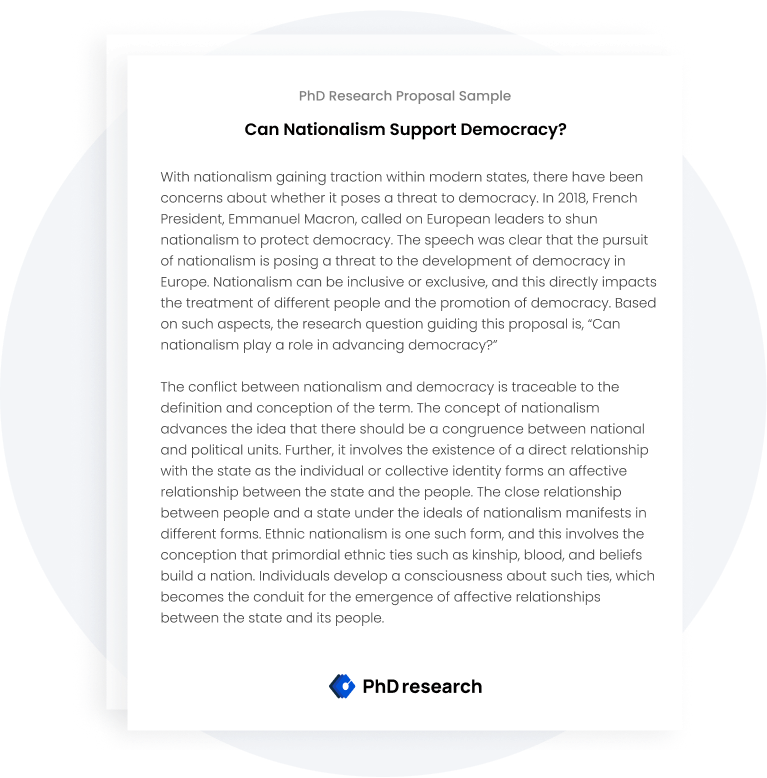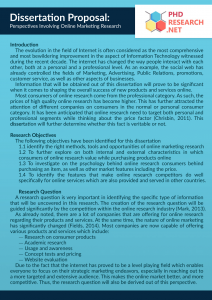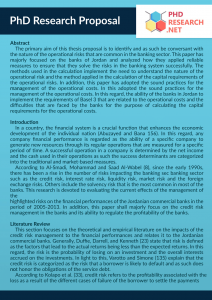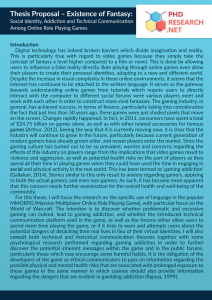PhD Research Proposal Sample for Your Inspiration
One of the toughest things to do when it comes to completing a voluminous and challenging PhD research project is the proposal. The thing about the PhD research proposal is that you have to encapsulate everything that you want to accomplish, communicate in a concise way what you want to do, the resources that it will require, and finally you have to convince the reader of the viability and necessity of the project. It isn’t easy to know where to begin with something like this, but with the help of a PhD research proposal example from our professional PhD writing service, it’s easier than ever! We’ve got a wide range of samples made by doctoral proposal writer that you can take advantage of to learn all the ins and outs of crafting the highest quality proposal.
Nevertheless, if you have some questions or our professional example research proposal cannot help you, you can always buy research proposal. No matter what the subject or specifications of your proposal are, we provide you with a top-quality paper that will be quickly approved!
If you need some help with PhD investigation, you may use these samples for writing. Another smart solution is to pick a sample research proposal with comments from an expert. Such samples are just to give you some idea about writing the research proposal. However, if you are still confused or facing some time constraints to write PhD proposal, we are here to help you. Our team of experts has vast experience and expertise to write a perfect research proposal for your needs. Moreover, we can help you choose the most relevant research proposal topics, write a paper from scratch, or improve the existing one. No matter what your subject is, we have the subject specialist on every subject, who have years of experience of writing research proposals. We ensure fresh and unique work, which is 100% plagiarism free. Each student is special to us, and we ensure your personal and work details will be kept secret. We can also help you to meet your short deadlines. With the lightning-fast experts on the board, our PhD proposal writing service accepts even last-minute tasks, delivering high-quality outcomes on time or even earlier, leaving enough time for revisions and comments from your supervisor. Get your PhD research proposal without any hassle, contact us Now!
Spend just 5 minutes and get perfect PHD paper!Order now
Look Through Our Well-Written PhD Research Proposal Sample
The Dynamics of Hyperinflation and Stabilization Policies – the Case of Zimbabwe
The dynamics of hyperinflation and stabilization policies
The running of the country can be viewed commercially as a business enterprise by the economists. The business needs to be run in equilibrium; a balance between supply and demand must be stricken if the entrepreneur or the owner of the enterprise is to enjoy any benefits accrued by running a business. In the case of a country, it should be governed in a way that that the prices of goods and services are kept in control. The stakeholders must not let the prices escalate beyond the ability of a typical citizen. Similarly, the release of cash into the economy should be maintained so that the flow of money is monitored and controlled, hence preserving the value of that particular currency.
Rationale
This proposal will dig into inflation and find out how inflation has affected economies of a country, in particular, Zimbabwe and the ways to stabilize this condition. The dynamics of hyperinflation will also be looked into in detail to bring out the real picture and the damages it causes to an economy. The proposal will also focus on the causes of inflation in Zimbabwe and the how the theories of hyperinflation have applied in this context. The proposal will also look at the quantity theory of money and how it is associated with hyperinflation.
Introduction
Hyperinflation can be defined as a situation where the prices of goods and services escalate beyond control that the concept of inflation is an understatement. Economically, hyperinflation can be defined to occur when the total inflation over a period of three years is equivalent or exceeds 100%. Countries in hyperinflation usually experience rapid erosion of the real value of local currency prompting the population to hold a relatively stable foreign currency.
Hyperinflation makes the prices of goods and services in an economy to rise rapidly since the value of the local currency loses the real value quickly. Zimbabwe has experienced hyperinflation since 2001 with inflation rates over a whopping 100%. However, as from 2006, inflation in Zimbabwe has risen to an uncontrollable 1500% annually. It should be observed that Zimbabwe was the only country that was experiencing hyperinflation and the first in the 21st century to have hyperinflation. Inflation in Zimbabwe has been perceived in two ways. First, the private sector speculation which the Zimbabwean authorities argue that the private sector rises up the prices intentionally to maximize profits on to pile pressure on the economy through ruthless price increments.
Secondly, the authorities also believe that the withdrawal of aids and the international economic sanctions have led to an economic decline from the year 2000. This perception has the explanation that the printing and minting of excess money by the government is usually tailored to bridge the gap between the government revenue and the actual receipts. This proposal to examine these concepts in depth.
Literature review
In this section, the Cagan (1956) hyperinflation model will be examined, where he assessed the statistical connection between cash and changes in price by conducting instances of hyperinflation in six different countries across Europe. According to Cagan, the demand for money balances declined with increase in inflation, assuming inflation played a significant role in determining hyperinflation.
Milton Friedman bases his view of hyperinflation in quantity theory of money. This theory states that the relationship between money and the price level is directly proportional. This relationship implies that inflation will increase with an increase in money supply and the continued trend will lead to hyperinflation. In Zimbabwe, the supply of money and the prices of goods and services increased in tandem, as per the quantity theory of money because people opted to use the available cash immediately, rather than to wait on the depreciating cash. This, in turn, led to the increase of velocity as well as an increase of money through the printing of new currency, hence the exponential increase in prices of goods and services in Zimbabwe.
Methodology
This proposal will seek to clarify the mechanisms through which money, the setting of price behavior and the requirements of government revenue collaborate in Zimbabwe, to examine the explanations put forth by the authorities about the hyperinflation in Zimbabwe. To achieve this goal, the proposal will look at various models and tests that will lead to the understanding of the hyperinflation.
Granger causality test
In general, it is obvious that money engenders the rate of inflation, but the reverse could also be claimed to be true. It can be said that hyperinflation has self-perpetuating tendencies, due to the fact that the rise in prices of goods and services results in the rise in demand for nominal cash. Thus, causation develops from inflation to supply of money. This test investigates the amount of the existing value of money and premium is a utilizable component in the prediction of inflation.
Theoretical model
This model provides the classical quantity theory of money which believes that institutional factors determine the rate of money circulation. The economy is assumed to be or close to the real GDP. In this case, the growth of money does not have an effect in the real GDP. This implies that holding both variables constant, the growth rate of money is directly proportional to the rate of inflation. Inflation reduces money demand due to an increase in the opportunity cost of holding money. Hyperinflation in Zimbabwe increased the parallel market premium and consequently, a change in the parallel market premium affected the velocity of cash in the circulation. The data used here was derived from various sources including the website of the RBZ.
The inflation data and money supply were collected from RBZ while parallel exchange rate was collected from Carmen M. Reinhart, a Harvard Kennedy School Professor of the International Financial System. The methodology in this paper employs heavily the ARDL co-integration approach for investigating the relationship between the inflation and its determinants. ARDL was used because it has several advantages over other models of co-integration. ARDL can be used with time series data, can also be employed in a general-to-specific modeling by including insufficient numbers to lags for the data generating and error correction model (ECM) can be derived using ARDL co-integration model.
Theoretical/conceptual framework
Lagged change in the inflation and money supply growth are insignificant in the ARDL framework. Moreover, the ever-increasing prices are not unsustainable in the long-run; hence using the concept of long-run relations could give incorrect results. Zimbabwe had almost all her prices listed in foreign currencies which fully wrote off inflation inertia. In this case, an exchange rate is a useful tool for curbing inflation rates thereby making stabilization of hyperinflation less costly in comparison to moderate methods of dealing with hyperinflation. Through Ordinary Least Squares method, hyperinflation in Zimbabwe is said o have been caused by the rapid growth of paper money. The money demand model will seek to find out if this result is consistent. Additionally, a unit increase in the parallel market premium will result in an equivalent change in inflation.
High rates of interest will deter borrowing and foster saving, slowing the economy and hence disinflationary effects. The Treasury bill by the Zimbabwe government had turned the interest rates negative and this manipulation discouraged savings by the households. As per the Quantity Theory of money, hyperinflation in Zimbabwe could have been a monetary phenomenon and the only way to curb it would be to constrain the unnecessary money supply growth.
Research plan
Hyperinflation in Zimbabwe had severe adverse effects on the economy in regard to wealth, savings and deposits. Prices of essential goods and services became unreachable, especially to those on inflexible incomes. Countermeasures including price controls and foreign currencies ban to control the then escalating levels of inflation and the devaluation of the Zimbabwean currency were taken. Zimbabwe’s hyperinflation was at its peak when the government compelled the RBZ to issue banknotes of higher denominations, hence fuelling the rate of inflation. The Zimbabwean dollar value diminished at a faster rate and the RBZ could not keep up with the printing. This led to the abandonment of the Zimbabwean dollar in favor of the US dollar as well as the SA Rand.
This study aimed at finding the causes of hyperinflation in Zimbabwe by using the right econometric models. Its main aim is to find out if the growth of money has a positive effect on inflation. Additionally, it will be aimed at finding out whether the parallel market premium is directly proportional to the growth of inflation. Whether money supply is the primary driver of hyperinflation in Zimbabwe, the findings of the research will provide the answer.
Works cited
BBC News,. ‘Zimbabwe Abandons Its Currency’. N.p., 2014. Web. 29 Dec. 2014.
Cato Institute,. ‘Measurements of Zimbabwe’s Hyperinflation’. N.p., 2014. Web. 29 Dec. 2014.
Larochelle, C., J. Alwang, and N. Taruvinga. ‘Inter-Temporal Changes In Well-Being During Conditions Of Hyperinflation: Evidence From Zimbabwe’. Journal of African Economies 23.2 (2014): 225-256. Web.
McIndoe Calder, Tara. ‘Hyperinflation In Zimbabwe: Money Demand, Seigniorage And Aid Shocks’. SSRN Journal n. pag. Web.
Makochekanwa, A. ‘A Dynamic Enquiry Into The Causes Of Hyperinflation In Zimbabwe’. The University of Pretoria, Department of Economics (2007): n. pag. Print. Reserve Bank of Zimbabwe (RBZ),. ‘Bank Annual Reports From 2000-2008’. N.p., 2008. Web. 29 Dec. 2014
Sokic, Alexandre. ‘The Monetary Analysis Of Hyperinflation And The Appropriate Specification Of The Demand For Money’. German Economic Review 13.2 (2011): 142-160. Web.
Works, Anchor. ‘Data’. Carmenreinhart.com. N.p., 2014. Web. 29 Dec. 2014.
You can also take a look at our guide for writing an interpretive thesis if you feel like you’re struggling to write on your own. So check it out! You can also find out more helpful examples of research proposals if you contact us.





